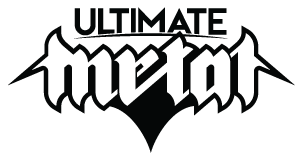Anybody out there boosting certain frequencies when recording guitars? Particularly with cab impulses.
I find that the guitars come out a bit thin and fizzy sounding and there's always a distinct lack of bottom end to the point where you don't even need to roll off any of the low end!
Apart from double tracking are there any other popular techniques for making guitars sound thicker?
I also find I have to eq out a LOT of the top end when recording guitars or they sound too fizzy (somewhere around about 10000khz) and then re-boosting the top end later on to brighten them up in the mix. Is that just me?
I find that way the guitars sound nice n' bright but some of the horrible FIZZ has gone.
I've read Colin's mixing guide for guitars on here which was helpful.
Lastly, when using multiple impulses is it best to have a seperate track for each impulse - therefore simulating each microphone? (in the way of if you were micing a real amp)
For instance with double tracking :
1 performance (panned left) times 3 impulses = 3 tracks. Another performance (panned left) = 3 more tracks.
And the same for panning right so you end up with 12 tracks in total just for guitar?
Is there a way to get more spread across the mix for single tracking too? I've heard single tracked guitars that fill much more space in mix than all being panned 100% left and right. Is it simply done by not panning them all the way over 100% or is it a case of spreading the different mics something like 60% then 80% then the last one 100%?
Questions questions questions!
Thnx in advance!
I find that the guitars come out a bit thin and fizzy sounding and there's always a distinct lack of bottom end to the point where you don't even need to roll off any of the low end!
Apart from double tracking are there any other popular techniques for making guitars sound thicker?
I also find I have to eq out a LOT of the top end when recording guitars or they sound too fizzy (somewhere around about 10000khz) and then re-boosting the top end later on to brighten them up in the mix. Is that just me?
I find that way the guitars sound nice n' bright but some of the horrible FIZZ has gone.
I've read Colin's mixing guide for guitars on here which was helpful.
Lastly, when using multiple impulses is it best to have a seperate track for each impulse - therefore simulating each microphone? (in the way of if you were micing a real amp)
For instance with double tracking :
1 performance (panned left) times 3 impulses = 3 tracks. Another performance (panned left) = 3 more tracks.
And the same for panning right so you end up with 12 tracks in total just for guitar?
Is there a way to get more spread across the mix for single tracking too? I've heard single tracked guitars that fill much more space in mix than all being panned 100% left and right. Is it simply done by not panning them all the way over 100% or is it a case of spreading the different mics something like 60% then 80% then the last one 100%?
Questions questions questions!
Thnx in advance!

